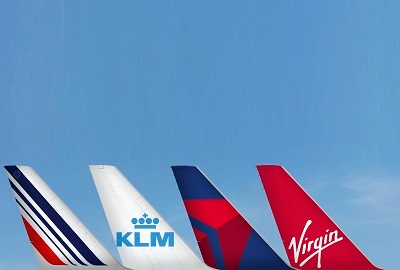Sustainable Flight Challenge: airlines show their current CO₂ reduction capabilities
When it comes to sustainability in aviation, there is no lack of good will and serious plans for the future. Among SkyTeam members, there is a lot of commitment to operate more sustainably towards 2030, but how sustainable can they operate today? The Sustainable Flight Challenge will show what SkyTeam members are capable of with today's tools and innovations.
The initiative is a very real challenge to participating airlines to find the most sustainable way to operate a specific flight in their existing networks. All learnings and innovations from these dedicated flights will be shared openly, to help the airlines incorporate new sustainable practices in their operations. This way, every member – and the industry as a whole – will benefit from the challenge, to help find new ways to reduce the airline industry's footprint and bring the future of sustainable air travel forward.
Seventeen airlines participate
For the Sustainable Flight Challenge, this is the first (trial) year in which seventeen airlines participate, to fly their most sustainable flight and share their experience. As the challenge rules say: "United we can inspire, accelerate, and change the industry. And meet our ambitious climate goals. With this challenge, we want to bring about faster innovation for sustainable aviation."
The 'rules of the game' include:
- The challenge is focused on environmental sustainability.
- There are two distance categories: long haul > 5000 km and medium-haul 1000 - 5000 km. Airlines may participate in both distances.
- Airlines operate one single flight using an existing route per category.
- The challenge starts at the check-in and finishes when passengers pick up their bags at their destination. So, it's not just about an optimal flight, but also about sustainable solutions for freight, supplies, or food.
- Measurements will be compared to the other participating airlines.
- 'Greatest CO₂ reduction' awards will be measured against each airline's own baseline set of reference flights with the same aircraft type in the same distance bound.
- Participating airlines may choose to compensate for any remaining CO₂ emissions from the chosen flights to be carbon neutral.
- Participants in the challenge will be judged in all award categories.
- Participating airlines commit to sharing all innovations on sustainability.
Practical ideas to save energy
Among the participating airlines, experts from all corners of the company team up to come up with new – practical and actionable – ideas to save energy, and more specific, to reduce CO₂. On the first attempts by participating airlines, some clever ways to save weight have been applied. On some flights, the fuel tanks contain 39 percent biokerosene, or Sustainable Aviation Fuel (SAF). Pilots taxied on one engine instead of two and flew an ideal flight route that had been mapped out in cooperation with air traffic control. In some cases, the loading strategy had been changed to optimise the position of the centre of gravity, which helps aerodynamics and saves fuel.
The performance of the participating airlines is assessed by an external auditor. A jury of six people, led by former Dutch Prime Minister Jan Peter Balkenende, will decide which airline has delivered the best performance in various categories. The results will be announced at the end of June.


